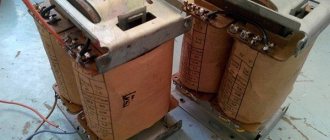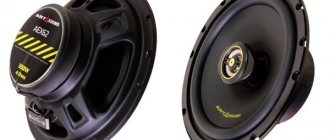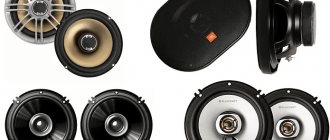How to choose an amplifier for a subwoofer based on power
If for an acoustic amplifier the main attention should be paid to sound quality, then in the case of a subwoofer the key characteristic when choosing is power. It comes in two types:
- Maximum (PMPO). As a rule, it is indicated on the housing and means the total power for all channels with distortion. You should not rely on this indicator, since it does not correspond to reality and serves only as a bait for the buyer.
- Nominal (RMS). Usually recorded in the data sheet or indicated on the box. Rated power is the very figure that should be used as a guide when making a purchase. The parameter should be specified at a THD of less than 0.1% and a voltage of 14.4 V.
Good amplifiers for subwoofers are equipped with a certificate that contains information about the product serial number and the actual power indicator obtained under factory measurement conditions. Such data is traditionally provided by serious companies like Rockford Fosgate, Alpine or MTX.
It is a well-known habit of the majority of companies to slightly inflate the power value in order to attract the attention of a potential client. Against this background, the DLS brand stands out favorably: the manufacturer deliberately slightly underestimates the real figure, moving into a lower category of devices, where it easily maintains leadership.
There is endless debate about what the amplifier power value for a subwoofer should be. There are only three points of view:
- It is necessary that the amplifier be less powerful compared to the subwoofer. This opinion is erroneous, since a weak device will cause the voice coil to burn out.
- Preference should be given to an amplifier that is equal in power to the subwoofer. In this case, there is also a catch - the rated power is normalized for a voltage of 14.4 V, which is almost never maintained at the amplifier outputs. This situation is fraught with overheating of the voice coil.
- It is better that the amplifier exceeds the subwoofer in power. The best option from a security point of view for equipment. The only risk is the possibility of mechanical damage to the coil, but this can be avoided by not turning the speaker to maximum and not listening to ultra-low frequency tracks too often.
Since the superiority of an amplifier over a subwoofer in terms of power gives the greatest chance of a long period of useful operation of the devices, it is recommended to prefer this option. Also, there is ongoing debate on the Internet about the required number of watts. As practice shows, it is better to choose an amplifier model 1.5-2 times more powerful than a subwoofer.
Methods for connecting acoustics to an amplifier
Immediately before starting to assemble the circuit, it is important to carefully work out the connection diagram that will be used. The type will depend on the characteristics of the amplifier, the parameters of the speakers used, as well as the power source.
Separately, it is worth considering the number of amplifier inputs, since this number forms the main restrictions for the acoustic circuit. Models with two, four and six channels are common, suitable for connecting the corresponding number of loads.
The speakers can be connected to amplifiers in parallel, in series or in parallel-series. Each method has specific features that must be taken into account when developing a circuit for connecting speakers to an amplifier.
Parallel connection
diagram of parallel connection of speakers with an amplifier
Parallel connection seems to be a common way of assembling an acoustic circuit. The process includes the following steps:
- The first channel of the amplifier, marked “-”, is connected to the speaker terminal under the “+” sign.
- Next, the “-” and “+” terminals are installed together in the corresponding connectors.
- The remaining elements are placed according to the same principle.
Parallel connection causes load resistance to drop as output power increases. Moreover, the power increases in proportion to the number of connected speakers. During operation, it is important to consider the permissible load on the amplifier, as well as the number of supported channels.
To guarantee the durability and performance of the created circuit, it is recommended to independently select the load, taking into account the results of calculating the total resistance and indicator for each device.
Serial connection
diagram of a series connection of speakers with an amplifier
In a series connection, the load elements are connected one after another, which explains some of the specific features of such circuits. Assembling this version of the circuit involves performing the following steps:
- First, you should select speakers whose resistance will be the same. Otherwise, the sound quality will be poor.
- Next, connect the negative terminal of one speaker to the positive channel of speaker number two.
- After this, the positive cable is fixed to the negative terminal of the amplifier.
- The negative cable is connected to the positive input of the amplifier.
When assembling such a circuit, it is important to consider that many speakers can be connected to each other at once.
Parallel-serial connection
parallel-series connection diagram of speakers with an amplifier
Parallel-series connection is a special method that combines the two methods of connecting speakers discussed above. With its help, four speakers with two channels are connected and the necessary power distribution is ensured during operation. The alternate connection of products with low frequencies and broadband devices deserves special attention. However, before using such a circuit, it is important to ensure that it works with a load of 2 ohms.
Instructions for assembling a parallel-series circuit:
- The negative contact of the first column is connected to the positive contact of the second column.
- The third element is also connected here via the negative terminal.
- The first positive contact is output to the main channel with the “+” sign. The free positive terminal of the third load is also connected here.
- The minuses of the second and fourth elements are also displayed in the output under the “-” sign.
- Next, the common terminals of the bridge are connected to the corresponding terminals of the amplifier.
When assembling such a circuit, it is important to consider polarity, since errors can lead to a short circuit. And if at this time a load is applied to the circuit, the amplifier may fail.
If you hear an unpleasant sound when you first start the circuit, you need to quickly turn off the equipment and de-energize the circuit. After this, you will need to carefully examine the transitions of the wires from negative to positive. An unpleasant sound during operation indicates that the circuit is operating out of phase.
Sometimes after assembling the circuit one channel does not work. Here you should make sure that the connection of the cables to the speakers is secure and nothing interferes with the contact between the terminals.











